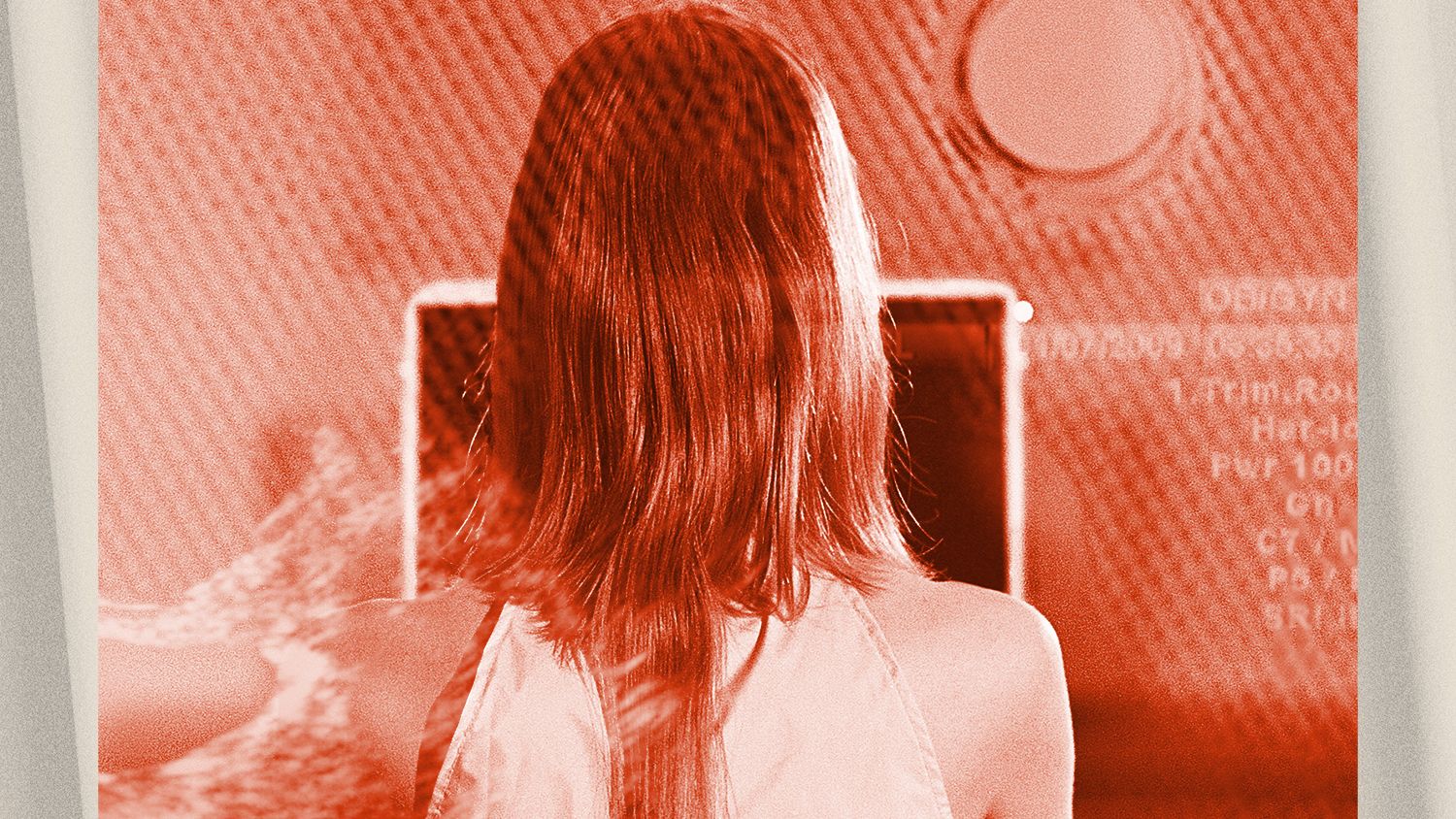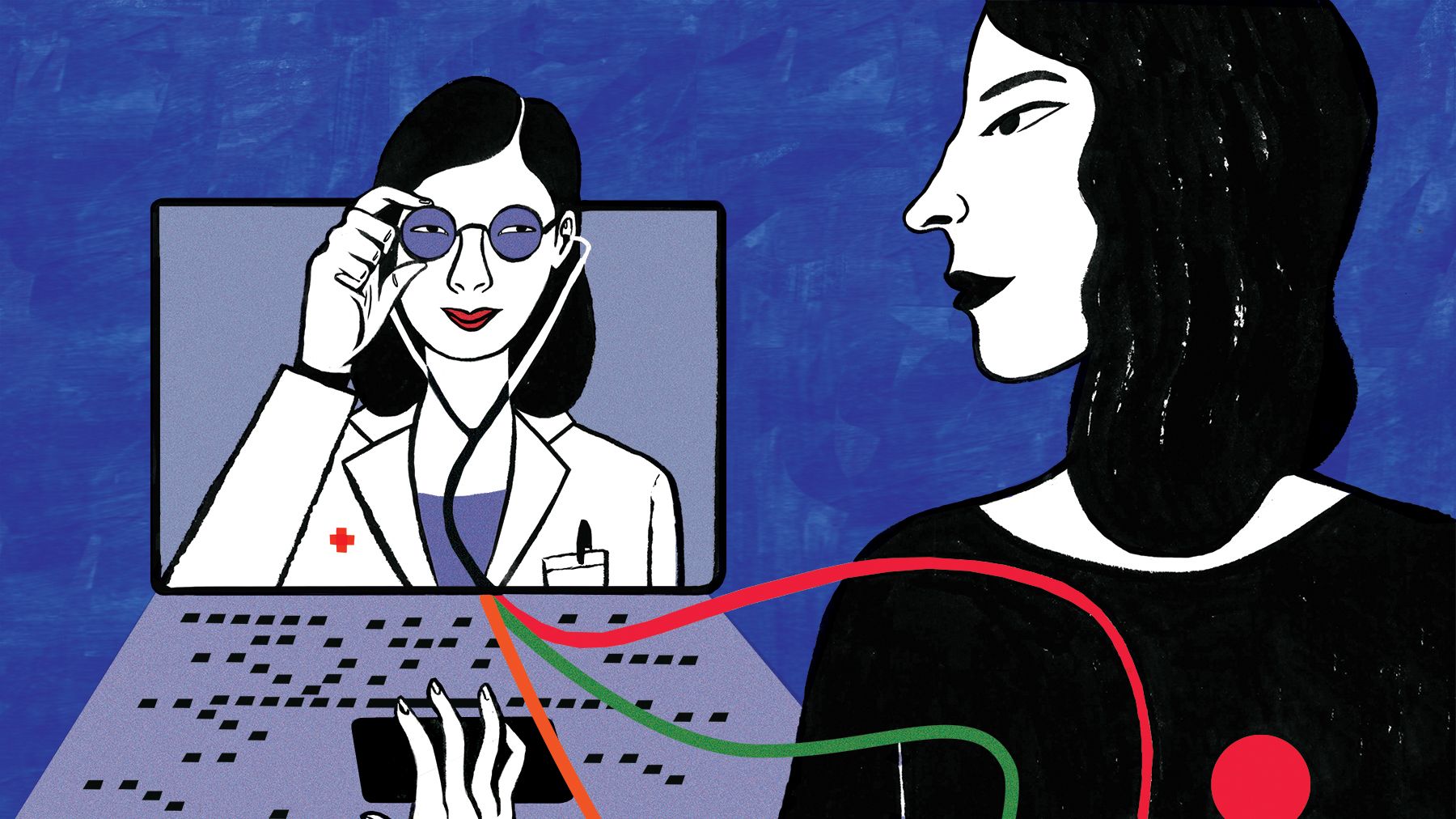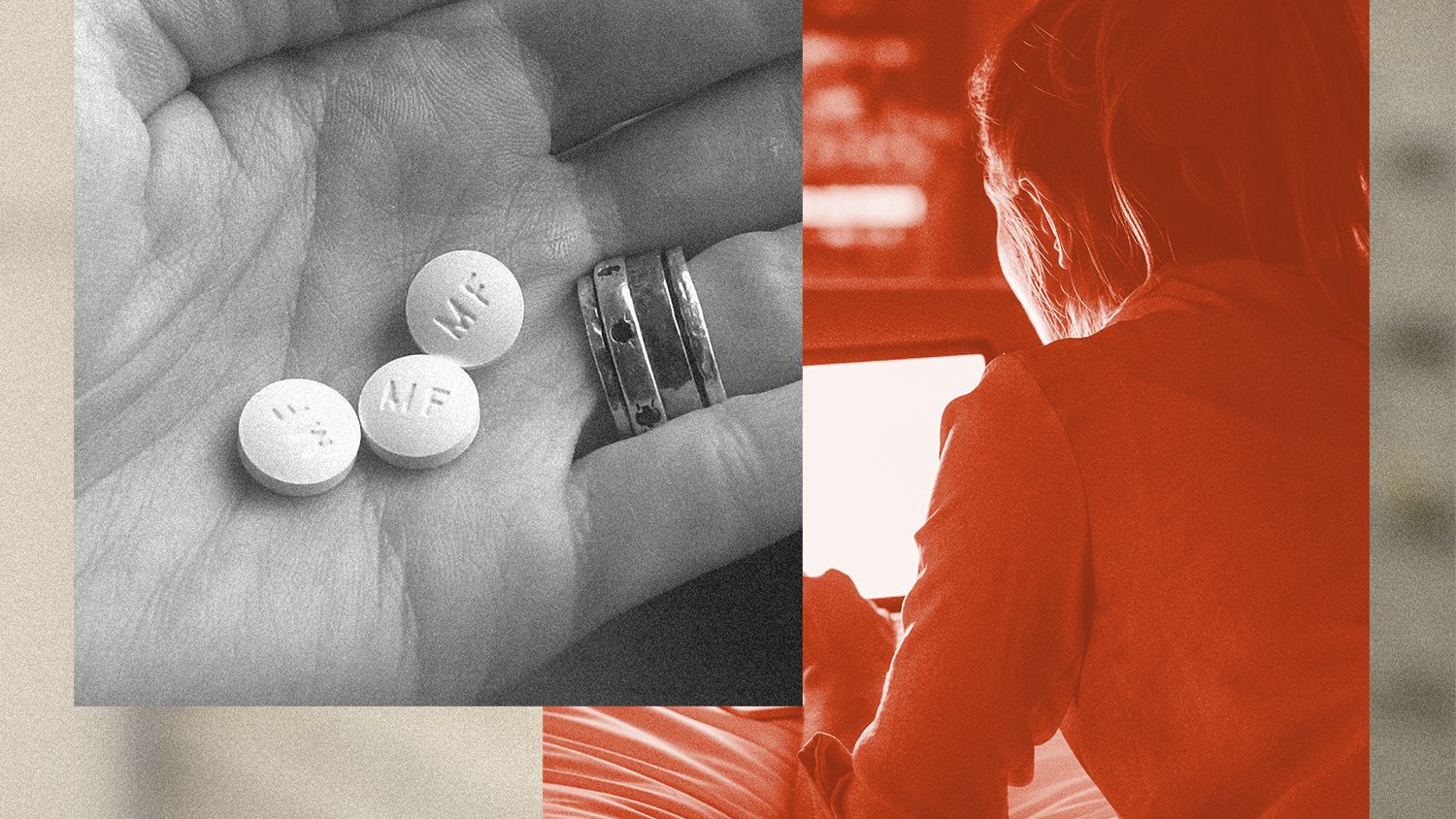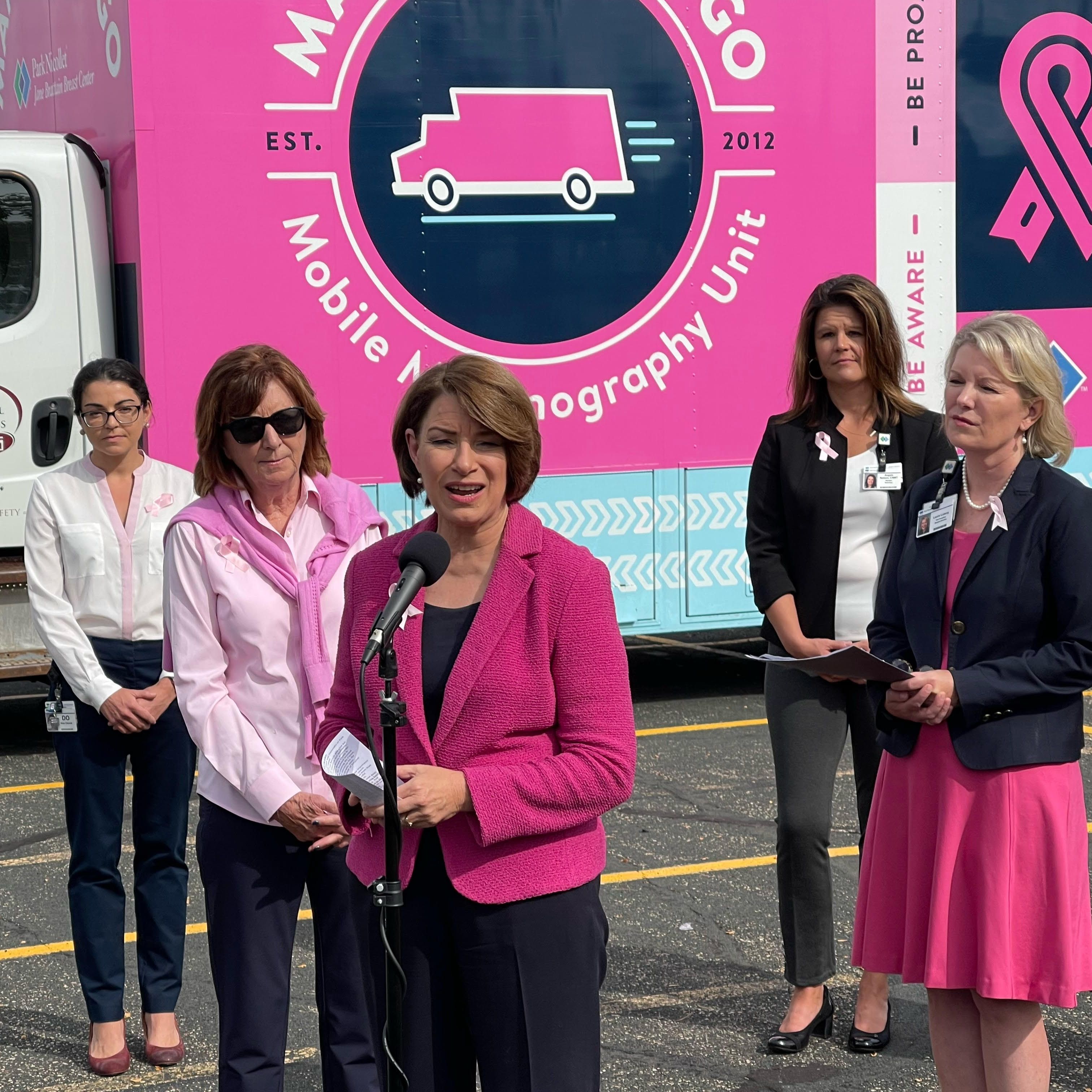Exclusive: First Large-Scale Telemedicine Abortion Service Launches in U.S.
On the heels of a Biden administration announcement that temporarily allows telehealth abortion, a new, first-of-its-kind telehealth service, Abortion on Demand, opens to help women get care.

A new telemedicine site is changing the future of abortion access, hopefully, permanently: Launching today, Abortion on Demand (AOD), the first large-scale telehealth abortion (a.k.a. teleabortion) service run by a U.S.-based provider, will help people who want to end their pregnancies with pills. The launch comes immediately after the Biden administration announced it would temporarily allow telemedicine abortions during the pandemic; it's a change long-awaited by reproductive rights advocates and AOD's founder, Dr. Jamie Phifer, who has been building the service for the last year and a half—keeping it under wraps until such a policy change enabled her to legally get it off the ground.
Teleabortion has complicated history in America. Medication abortion (i.e. ending a pregnancy via pills) is legal in every state. However, providing virtual abortion care and mailing abortion pills to patients is not. Despite the regimen's proven safety record, the first of two pills taken to end a pregnancy, mifepristone, is to a subject to a Risk Evaluation and Mitigation Strategy (REMS), an FDA drug-safety program. The rule requires that patients pick up the drug at a clinic or hospital—not at a retail pharmacy or by mail. During the pandemic, a federal lawsuit meant that mailing pills was permitted until the Supreme Court halted the practice on January 12, 2021; before the Supreme Court ruling, several telemedicine sites opened...then were forced to shut down.
RELATED STORY

Biden's announcement means teleabortion can begin again. AOD will initially launch in in 20 states and Washington, D.C.,with short-term plans to expand to five more states.
Phifer is focused on bringing accessible care to those who need it most—the service is $239, about $300 less than the average price of ending a pregnancy at a health center—while helping brick-and-mortar clinics weather the disruption of telemedicine. To that end, Phifer will donate 60 percent of all profits from her service (the IRS maximum) to the Abortion Care Network (ACN), a national membership organization for independent, in-person clinics. The money will specifically go to ACN’s Keep Our Clinics fund.
Nikki Madsen, ACN’s executive director, describes independent providers as small businesses like your local bookshop. “Indies” provide the bulk of abortion care in this country: Fifty-eight percent of abortions in the U.S. are done at indies, even though they only make up about 25 percent of all clinics, according to a 2020 ACN report. They’re also crucial for later abortion care, as 62 percent of clinics that provide abortions after the first trimester are independent, as are 81 percent offering care after 22 weeks (teleservices can’t serve these populations). “Abortion care just doesn't exist in this country without independent providers,” Madsen says.
As an abortion provider, Phifer recognizes the challenges that independent clinics have historically faced and the threat that telemedicine poses: Her day job is working as a primary care provider at a telemedicine startup. “I saw my first abortion patient 10 years ago at a small, independent clinic in Seattle; they are now closed and there's a Whole Foods there,” Phifer says, adding, “I put my own personal savings into launching this and to launch it quickly because I was concerned someone is eventually going to do it, and someone who might do it might not actually have independent clinics in mind."
Marie Claire spoke to Phifer about starting the service and her plans to expand.
Stay In The Know
Get exclusive access to fashion and beauty trends, hot-off-the-press celebrity news, and more.
Marie Claire: Who will Abortion on Demand serve and how does the process work?
Dr. Jamie Phifer: We will be seeing patients up to 56 days’ gestation based on their last menstrual period in 20 states plus Washington D.C. We do an asynchronous intake that is entirely automated, and then we do a video appointment with the physician.
Then, there's an informed consent process using a pre-recorded video so that people can review it at any time. Then, we do a virtual chat with the physician after the patient has already watched the video so that they know what questions to ask. The whole process, from deciding that you want to proceed and getting your medication, should be between two and a half to five days, depending on where you are.
I frankly think medication abortion should be over the counter—it's actually safer than Tylenol. We have more Tylenol overdoses and complications in the U.S. than we do major issues with medication abortion.

MC: What is the screening like?
JP: [We look] for rare medical contraindications to mifepristone and gestational age and screen folks for ectopic pregnancy risk. We’re only seeing people 18 years or older. We do ask for a photo ID in the video portion of the visit; the ID doesn't have to match the state they say they're in, it just has to confirm their age.
MC: How did you choose the launch states?
JP: Based on which ones do not ban telemedicine [laughs]. It's interesting, some of them aren't banning telemedicine, but they're explicitly stating that an ultrasound needs to be done in-person. If we were sending someone in for an ultrasound, why don't we just send them in for mifepristone? We're not covering Alaska and Hawaii because of shipping costs and they are actually already covered by the Teleabortion.org study [an academic project that mails pills, the only way to qualify for mailing before the pandemic]. So, there wasn't the ethical urge to make sure that they were covered. And then in a couple of states, the mail-order pharmacy that we're working with doesn't yet have a license; we just have to wait until that's established.
MC: A lot of the states with teleabortion bans are also the hardest places to get an abortion. How does it feel to not be able to expand care in those hostile states?
JP: I can’t go into those states; I’ll lose my medical license. It's awful. It feels the way it always does.
Though COVID pushed the expansion of telemedicine drastically, it also exacerbated disparities in telehealth. We assumed that ‘well, telemedicine is expanding that means people will have more primary care access. Great!’ But that's not actually what ended up happening because all of the other disparities in the U.S. that haven’t gone away. We thought that people living in rural areas would be able to use telemedicine more because now providers in the urban centers in the state are able to care for them, and that didn't happen. Part of it is infrastructure and investing in those areas, part of it is distrust with health care providers, and part of it is some people don't have a smartphone that will enable you to do that.
Some of the same issues that exacerbate disparities in telemedicine primary care are the issues that are also present in abortion care that exacerbate disparities between early gestation care and later gestation care. As we push for more telemedicine access, though it would increase access to first-trimester care, it takes patients out of independent clinics that normally care for really complex patients. Those clinics then can't stay open. Therefore, we're not actually increasing access overall because where are people going to go if in-person clinics close?
MC: The donation model of Abortion on Demand hopes to address that. Can you explain your efforts to support independent clinics?
JP: The platform is built to try to address disparities in abortion care and try to be very explicit about offsetting the impacts of telemedicine abortion to independent clinics. We need to say upfront that we value in-person care, and we want to make sure that we're not actually decimating abortion access [as virtual abortion access increases].
MC: How’d you come up with the name?
JP: It is provocative, and I wanted abortion to be in the name explicitly because I wanted to counteract some of the stigma. I didn't want a fluffy name. And that's what it is: It's getting abortion almost on demand, like you would on your phone. I wanted the name to be descriptive, and I wanted also to ensure that the people who were using our service were comfortable with that concept.
All of our correspondence with patients doesn't have the word abortion in it, it just says “AOD.” The packaging says AOD. Credit card billing has the name of our LLC on it, so it wouldn’t be traceable at all.
MC: It’s also a phrase anti-choice activists use as a critique.
JP: That's why I picked it. There's this old photo from the 70s of a very young activist holding a sign over her head that says “abortion on demand.” I was like, that's what we want, that's what we're going to try to go for.
MC: Are you expecting anti-choice blowback?
JP: I do anticipate that anti-choice folks will try to use the platform. We actually charge the full price upfront when someone schedules and we specifically say on the platform why we do it: So the anti-choice folks will not build their own bot to block up the schedule.
If someone cancels within a certain timeframe, they get their full refund. If they cancel last-minute, we keep part of it and then donate. And then if someone, during their visit, either changes their mind or the physician realizes that maybe telemedicine is not a safe option for them, then we give a full refund.
MC: You put all of your savings into AOD but you also told us that your field doesn’t need more heroes. What did you mean by that?
JP: There are a lot of media pieces written about abortion. Especially when I was “growing up” in abortion care and training, there were a lot of pieces about individual abortion providers and how they're going against the grain and ensuring access. I really think the focus should be the patients. When you make it about one provider, or a set of providers—though they are doing wonderful, lifesaving work—it doesn't leave a lot of room for criticism and it doesn't leave a lot of room for growth. Once you said this person is a hero, what happens as the field grows and evolves? If they were a hero, where do they have to go from there? I think that our field should be continually growing and evolving.
This interview has been edited for length and clarity.

-
 Adria Arjona Smells Irresistibly Delicious Courtesy of This $48 Hair Oil
Adria Arjona Smells Irresistibly Delicious Courtesy of This $48 Hair OilPlus the makeup routine that helps her feel "like a rebel."
By Ariel Baker Published
-
 Princess Anne's Unexpected Suggestion About Mike Tindall's Nose
Princess Anne's Unexpected Suggestion About Mike Tindall's Nose"Princess Anne asked me if I'd have the surgery."
By Amy Mackelden Published
-
 Queen Elizabeth's "Disapproving" Royal Wedding Comment
Queen Elizabeth's "Disapproving" Royal Wedding CommentShe reportedly had lots of nice things to say, too.
By Amy Mackelden Published
-
 Senator Klobuchar: "Early Detection Saves Lives. It Saved Mine"
Senator Klobuchar: "Early Detection Saves Lives. It Saved Mine"Senator and breast cancer survivor Amy Klobuchar is encouraging women not to put off preventative care any longer.
By Senator Amy Klobuchar Published
-
 I'm an Egg Donor. Why Was It So Difficult for Me to Tell People That?
I'm an Egg Donor. Why Was It So Difficult for Me to Tell People That?Much like abortion, surrogacy, and IVF, becoming an egg donor was a reproductive choice that felt unfit for society’s standards of womanhood.
By Lauryn Chamberlain Published
-
 The 20 Best Probiotics to Keep Your Gut in Check
The 20 Best Probiotics to Keep Your Gut in CheckGut health = wealth.
By Julia Marzovilla Published
-
 Simone Biles Is Out of the Team Final at the Tokyo Olympics
Simone Biles Is Out of the Team Final at the Tokyo OlympicsShe withdrew from the event due to a medical issue, according to USA Gymnastics.
By Rachel Epstein Published
-
 The Truth About Thigh Gaps
The Truth About Thigh GapsWe're going to need you to stop right there.
By Kenny Thapoung Published
-
 The High Price of Living With Chronic Pain
The High Price of Living With Chronic PainThree women open up about how their conditions impact their bodies—and their wallets.
By Alice Oglethorpe Published
-
 I Used to Imagine Murdering the Men I Dated
I Used to Imagine Murdering the Men I DatedFalling in love helped me finally figure out why.
By Jessica Amento Published
-
 60 Workout Apps for Women Who Want Results (Without a Gym Membership)
60 Workout Apps for Women Who Want Results (Without a Gym Membership)Buying Guide Easy fitness plans you can follow without fear of judgment.
By Bianca Rodriguez Published
